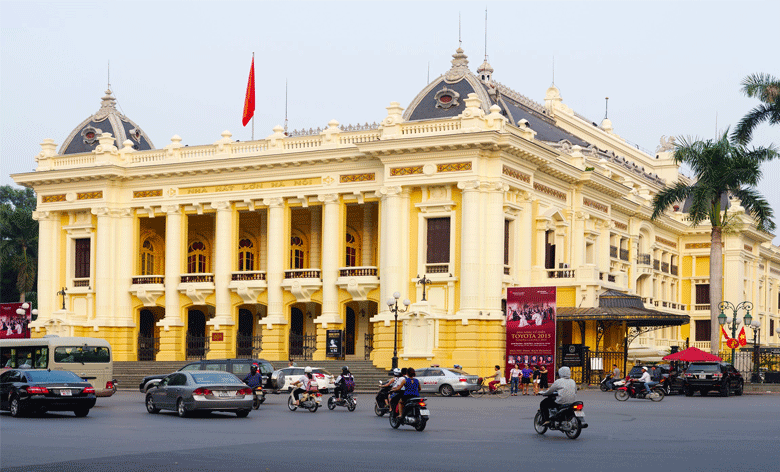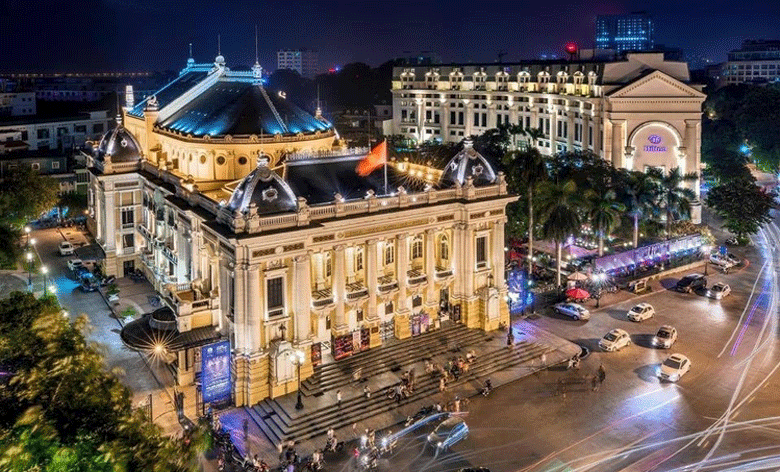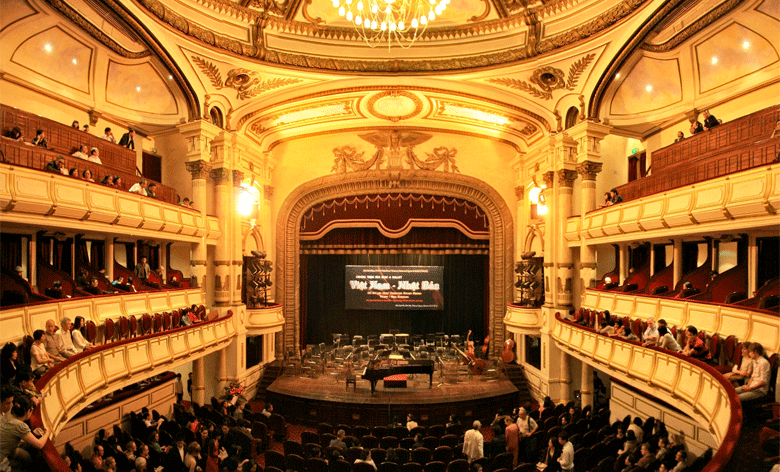Hanoi Opera House is one of the most significant architectural works and historical landmarks in Hanoi, Vietnam - the capital’s theatre of performing arts. Hanoi Opera House is located on the August Revolution Square, located at Trang Tien Street, not far from Hoan Kiem Lake and Vietnam History Museum.

History
From the time he first arrived in Hanoi in 1883, the French had soon intended to build in this city a venue for performing arts. The first theater, named But Pagoda Theater, is located in an empty space in front of Ngoc Son Temple, influenced by the nearby Thap But Tower. In 1887, on the occasion of the fair on Trang Thi Street, a Chinese-Chinese shop was built at the beginning of Hang Cot street - then named Takou Street - a theater specialized in Chinese opera. However, this theater was named by a French doctor named Nico and sometimes also for art groups from France to perform. Takou Theater, although not suitable for Western art activities, is the first theater in Hanoi in Western style.
The construction was started by the French in 1901 and completed in 1911, modeled after the Opéra Garnier Theater in Paris, though smaller in stature and using materials suitable for the local climatic conditions. Designed by architects Harlay and Broyer, the building brings many colors and architectural features of the theaters in Southern France, with the organization of the ground, performance space, stairs, entrance to the lobby ... similar to the theaters in Europe in the early 20th century.
Architecture

Although it is an eclectic architecture, mixed with many styles, Hanoi Opera House still bears the French neoclassical characteristics, especially in architectural structure, two-roofed roof tile style. slat with decorative motifs inside. Born later than theaters in Ho Chi Minh City and Hai Phong, Hanoi Opera House has the most complete architecture and become a familiar and typical image of Hanoi city.

Hanoi Opera House is located on August Revolution Square, overlooking Trang Tien Street, the old position is still the busiest area of the city. The building has a length of 87 meters, an average width of 30 meters, the highest roof top is 34 meters above the road base, and the construction area is about 2,600 square meters. To the right of the theater, the Hilton Opera hotel is located a bit bent, is also a project designed by the French architect. Bringing classic lines - such as high columns, Mansard roofs ... - the modern Hilton Opera hotel not only breaks the architectural space of the square but also helps to enhance the beauty of the theater.

Can be found on the outside of the building many different architectural styles. The main façade of the theater stands out thanks to the Roman Ionic columns, above it, by the curved roofs of stone tiles. It seems that Renaissance architectural principles are emphasized on this outward side. However, the curving curves of the balconies combined with the arched form above the entrance highlight Baroque elements. On both sides and in the middle, the intricate decorations, the curved support bars, rectangular windows or arches, all are rich in sculpture and have outstanding Baroque features. Particularly, the roof welcomes the entrance for people traveling on both sides in the style of Art Nouveau. At the top of the theater, the system of black stone roof tiles is organized with a combination of many forms, giving a sense of the French neoclassical spirit. All of these blends give the impression of an eclectic neoclassical architecture with values not only architectural but also decorative.

Address: 01 Trang Tien, Phan Chu Trinh, Hoan Kiem, Hanoi
Seating capacity: 598
Construction started: June 7, 1901
Phone: 024 3933 0113
Architects: Ho Thieu Tri, Francois Lagisquet, V. Harley
Distance from our hotel: 1 km - 12 min walk - 3 min drive


 en
en TIẾNG VIỆT
TIẾNG VIỆT